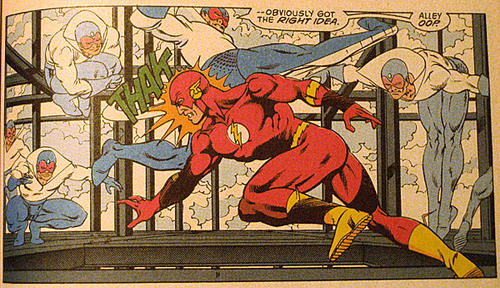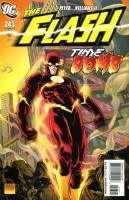Today’s guest post is the second in a series of interviews by Greg Elias on The Art of Speed.
With a Flash resume spanning a presidential election, trips to Hell, living clothes and a cosmic death-race, Paul Ryan’s work on the title is some of the most diverse of any artist to ever pencil those pages.
Starting with issue 119, a crossover with the Final Night mini-series, Ryan was paired with Flash scribe Mark Waid. From the Presidential Race storyline through Hell to Pay, Ryan was present for the return of The Top, Wally’s temporary relocation to Santa Marta and the raging comeback of the undead Rogues.
When Waid took a break from Flash in 1997, well-known writers Grant Morrison and Mark Millar took over for a year’s worth of stories. The tone of the book changed with the reintroduction of temporal challenges, mystical concepts and sci-fi elements reminiscent of the Silver Age Flash, as well as the expansion of more recent tropes like the Speed Force and Wally’s childhood.
Ryan also illustrated Legends of the DC Universe: Crisis on Infinite Earths, by Crisis architect Marv Wolfman, which tells the story of Barry Allen’s time on Earth D.
Previously an artist over at Marvel Comics, Ryan co-created the New Universe series DP7 and spent a notable, lengthy run on Fantastic Four. Most recently, he has illustrated The Phantom comic strip.
Recently collected for the first time, Emergency Stop and The Human Race showcase much of the second half of Ryan’s run on Flash.
Ryan answered our questions via email, revealing some of the process and his favorite Flash.


